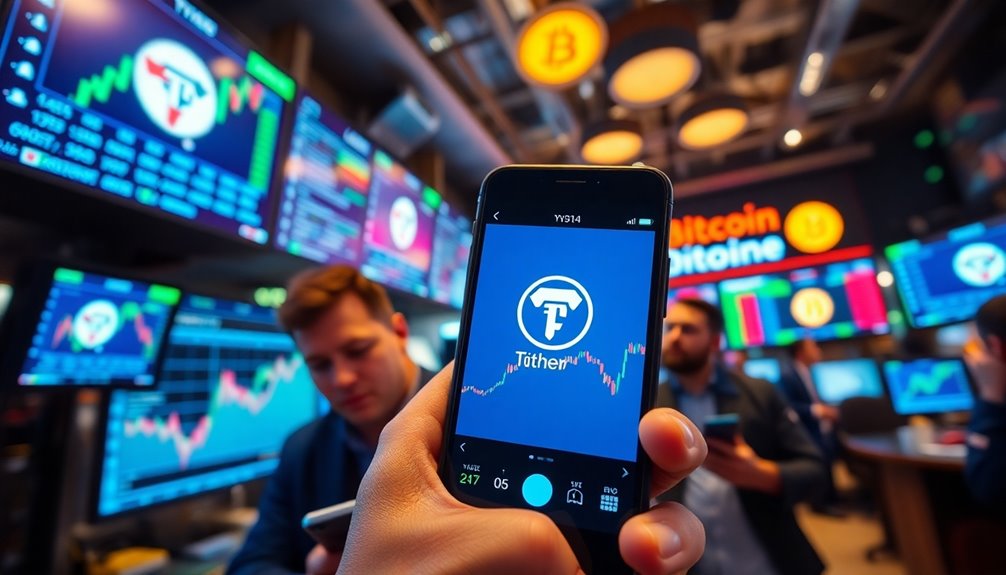Tether's recent integration with Bitcoin's base layer and Lightning Network is a game changer. It enhances USDT's utility for instant, low-cost transactions, bridging traditional finance and crypto. As regulatory scrutiny intensifies, this comeback could reshape market dynamics and promote financial inclusion. But what does this mean for the future of stablecoins and your financial options? The implications are vast, and you might want to consider how these changes could impact you.

As Tether makes its comeback to Bitcoin, you might wonder how this integration could reshape the stablecoin landscape. Tether's USDT stablecoin is launching on Bitcoin's base layer and the Lightning Network, setting the stage for a financial revolution. This move not only enhances the utility of USDT but also signifies a pivotal shift for stablecoins, which have mainly thrived on platforms like Ethereum, Tron, and Solana.
This integration uses the innovative Taproot Assets protocol developed by Lightning Labs, enabling seamless asset issuance on Bitcoin while leveraging the speed of the Lightning Network. Imagine sending money across borders instantly and at a fraction of the cost compared to traditional methods. That's what this integration aims to achieve—offering faster and more reliable transactions for remittances and everyday payments. With USDT now operational on Bitcoin's base layer, users can take advantage of the security and decentralization that Bitcoin offers.
By harnessing Bitcoin's renowned security and decentralization, combined with the Lightning Network's scalability, Tether is poised to enhance global payment solutions significantly. This could empower millions of users worldwide to send USDT, offering them a bridge between traditional finance and the burgeoning crypto ecosystem. As Tether expands its reach, it could also stimulate the stablecoin market, which already boasts a valuation of around $200 billion, with USDT leading at approximately $140 billion.
However, Tether's journey isn't without challenges. The company has faced scrutiny over its reserves and market practices, raising concerns about its stability. With ongoing regulatory investigations, including by the Department of Justice, the landscape remains uncertain. Yet, this integration could also provide Tether an opportunity to solidify its reputation and counteract past controversies.
Furthermore, the integration could enhance financial inclusion, especially in regions with limited access to banking services. By enabling cheap and efficient transactions, Tether could help integrate more people into the global economy.
As Tether strategically partners with various entities and invests in new technologies like AI, it's clear that they're not just resting on their laurels—they're aiming to address real-world needs in the financial sector.
In a rapidly evolving crypto market, Tether's comeback to Bitcoin may just be the catalyst that reshapes the competitive landscape for stablecoins and cryptocurrencies alike. As you watch these developments unfold, consider how this integration could impact your financial transactions and the broader market dynamics.









